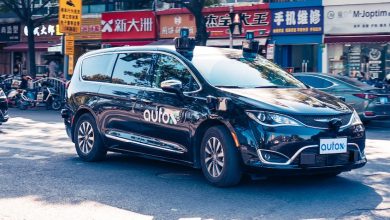Superpedestrian launches LINK, expanding into shared e-scooter operations
Acquiring Zagster’s Scooter Business and Raising Additional $15 Million, Superpedestrian Offers Its Advanced Vehicles for Sharing in Cities

Superpedestrian, a mobility engineering and technology company founded by urban transport experts from MIT, Boston, announced the launch of LINK, its new shared micro-mobility division. LINK allows riders to rent Superpedestrian’s e-scooters using a smartphone.
Superpedestrian acquired Boston based Zagster’s scooter business recently. It also received an investment of $15 million led by growth equity investor Edison Partners, Spark Capital and General Catalyst.
Founded in 2012 by CEO Assaf Biderman, Superpedestrian’s team has expertise in designing micro-mobility vehicles, including the Copenhagen Wheel. Likewise, Zagster brings operational sophistication gained from a decade of experience managing bike and scooter share systems. By combining operational excellence with the most technologically advanced e-scooters in the industry, LINK brings what has long been missing from the shared micro-mobility industry.
“Over the past three years, dozens of scooter operators have used cities as test labs. Unfortunately, many of them have failed that test. Equipment failures posed safety risks to riders and other road users, and both vehicles and businesses saw unnaturally short life spans, often leaving cities in the lurch. Meanwhile, Superpedestrian invested several years in designing and testing an e-scooter platform that could stand up to sustained shared use. Micro mobility is a critical tool for the future of sustainable cities, so I’m glad to see LINK combine proven vehicle technology and fleet management with a deep respect for city government,” said Emily Warren, Superpedestrian advisor, and former Lyft and Lime policy executive.
LINK offers a safer and more sustainable shared mobility service than existing alternatives with custom technology to improve the rider experience and effectively manage large fleets of vehicles in accordance with city needs. Benefits include:
Designed to work with cities.
LINK’s approach is distinguished by a commitment to collaborate with cities, developing advanced solutions to encourage safe riding, and protect shared public spaces. For example, LINK scooters can enforce geofences in < 1-second thanks to onboard map storage which enables the vehicle to bypass the vehicle-to-cloud lag and autonomously enforce a geofence. This also allows vehicles to safely slow to a stop before entering no-ride zones.
Built for rider safety.
LINK’s proprietary Vehicle Intelligence System (VIS) works as an oracle, monitoring the entire vehicle in real-time — including a self-diagnostic check before each ride — and proactively averting issues that could pose a safety risk down the line. The VIS continually monitors more than 140 indicators of vehicle performance per second, helping to address minor issues, including braking force, battery, and thermal events, before they become major problems.
Engineered to make business sense.
Superpedestrian’s e-scooters last more than 2,500 rides — far longer than the industry standard — and can travel up to 55 miles on a single charge. Resilient vehicles keep per-ride operating costs around 50% lower than other operators. This cost advantage allows LINK to operate in cities where other companies cannot compete.
“By combining industry-leading operations with Superpedestrian’s intelligent scooters, LINK is ushering in a new chapter for micro-mobility,” said Assaf Biderman, CEO of Superpedestrian. “Zagster developed the software and systems to support efficient day-to-day operations long before the Silicon Valley-funded micro-mobility boom. That’s why we tapped their expertise when it came time to launch this new platform. We’re excited to bring smart e-scooters to riders in the United States, Europe, and around the world.”



One Comment